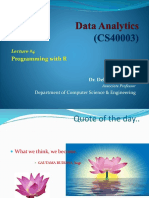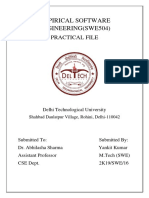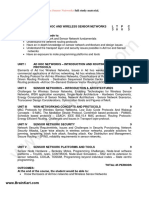0% found this document useful (0 votes)
52 views35 pagesLecture 1
The document outlines the DOTE2040 Business Analytics course, focusing on data, analytics, and the R programming language. It covers course objectives, prerequisites, and the basics of R, including its installation, data types, and operations. The course aims to equip students with the skills to analyze data and make informed business decisions using statistical and machine learning techniques.
Uploaded by
YUFEI RUANCopyright
© © All Rights Reserved
We take content rights seriously. If you suspect this is your content, claim it here.
Available Formats
Download as PDF, TXT or read online on Scribd
0% found this document useful (0 votes)
52 views35 pagesLecture 1
The document outlines the DOTE2040 Business Analytics course, focusing on data, analytics, and the R programming language. It covers course objectives, prerequisites, and the basics of R, including its installation, data types, and operations. The course aims to equip students with the skills to analyze data and make informed business decisions using statistical and machine learning techniques.
Uploaded by
YUFEI RUANCopyright
© © All Rights Reserved
We take content rights seriously. If you suspect this is your content, claim it here.
Available Formats
Download as PDF, TXT or read online on Scribd
/ 35























































































